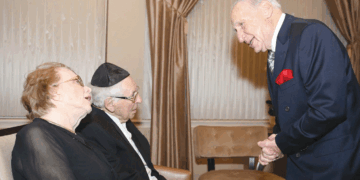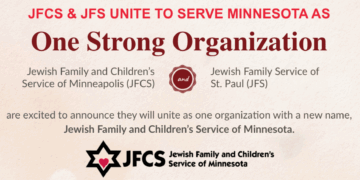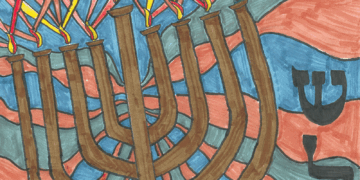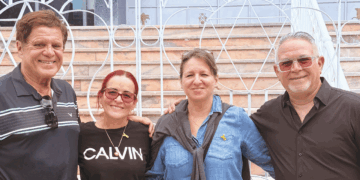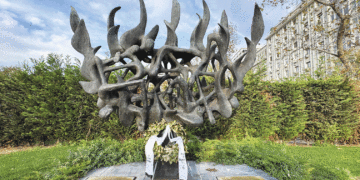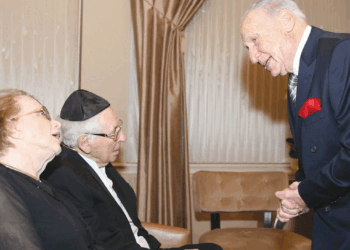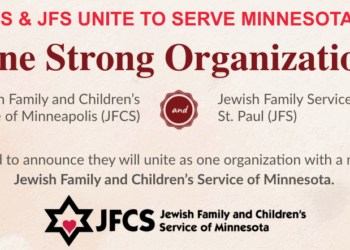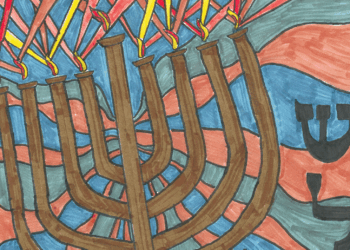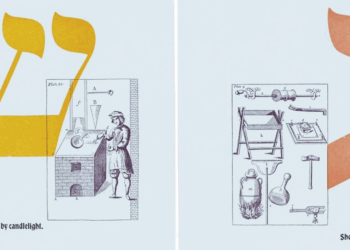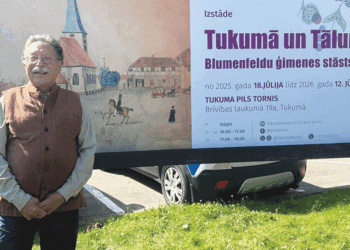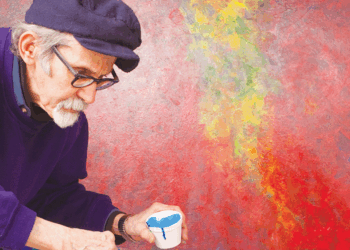(Editor’s note: The exhibition, “Through Their Eyes: The Story of Kfar Azza on October 7, 2023,” was on display through Oct. 10.)
By ELANA WARREN / Assistant Editor
“I know it’s overwhelming and sometimes it’s very tough, but it’s our job to tell the story of those innocent people.”
Michal Rottenberg survived the Oct. 7, 2023, Hamas terrorist attack on Kfar Aza, a kibbutz located less than two miles from the Gaza Strip. She was in Minnesota with a few other survivors to share the story of the people of Kfar Aza — those murdered and those rebuilding — through a self-guided temporary exhibition in St. Louis Park.
Remembering October 7
As Rottenberg guided a group through the main exhibit on Sept. 26, she continued, “Some of them were kidnapped with their pajamas from the house. Some of them were killed, murdered in their house, and the people, like the first responders, who tried to protect us weren’t able to protect anything because of the unhuman way that the terrorists came into the kibbutz.”
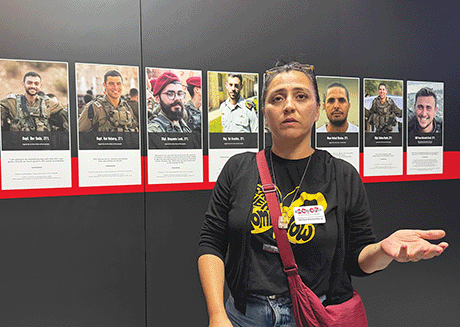
The names, pictures and stories of the 64 murdered civilians line the outer walls of the exhibit, with a back wall for the 18 hostages taken from the kibbutz and displays for the first responders and fallen rescue forces. Visitors may see some familiar faces on these walls — hostages who made headlines, such as the now-released Keith Siegel, as well as the late Netta Epstein, who spent a few summers at Herzl Camp as a camper and then as an ozo (counselor in training) in 2018.
On October 7, Epstein and his fiancée Irene Shavit were in their safe room when terrorists entered their apartment. Epstein sacrificed himself, throwing himself onto a Hamas grenade as he was shot. He died, but Shavit lives. Epstein’s story is but one of many murdered Kfar Aza residents in the exhibit.
“You can see the pictures on the wall; you can see pictures of smiling people. Each and every one of them has a story,” Rottenberg said.
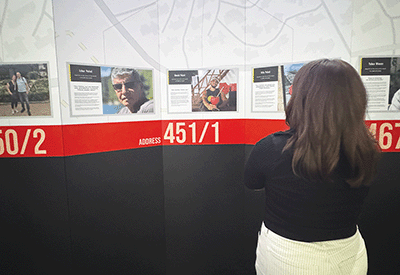
Overall, the Hamas surprise attack on the communities in the Gaza envelope killed 1,195 people, mainly Israeli civilians. That number includes 364 civilians murdered at the Nova music festival. In addition to fatalities, some 3,400 civilians and security personnel were wounded on Oct. 7. Hamas terrorists also kidnapped around 250 Israeli civilians and soldiers and took them into Gaza. The attackers also perpetrated numerous rapes and sexual assaults, and Israeli hostages in Gaza were subjected to sexual violence, according to a report by Pramila Patten, the UN’s Representative on Sexual Violence in Conflict.
The center of the main exhibition area features the first responders (the kibbutz’s emergency squad) and rescue forces (police, soldiers, medics and others who came to Kfar Aza to help). An aerial projector shows a map of Kfar Aza and marks the movements and statuses of the first responders as they defended against the invasion in real time. Seven of the 14 fighters perished.
Other digital displays include screens scrolling through the group chat messages between kibbutz residents as they reached out to one another during the hours of the attack and, in another room, video testimonies from survivors and the family and friends of murdered Kfar Aza residents. Next door is a photo gallery showing both Kfar Aza as it was before the attack and the destruction after.
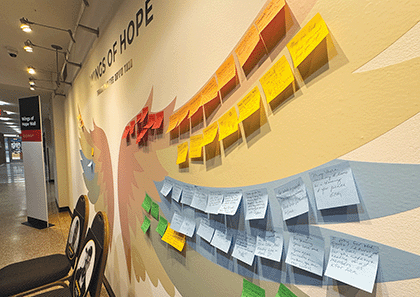
Finally, the exhibition closes with the rainbow Wings of Hope Wall, where visitors can add their own messages of support, prayer or reflection to be delivered to the Kfar Aza community. The message accompanying the wall: “Hope dies last. Let your words be the light in our darkness.”
In addition to the notes, proceeds from ticket sales will go back to Kfar Aza to support rebuilding efforts.
“October 7 is one day, but every day we try to rebuild our lives in many, many ways,” Rottenberg said. She had been living in Kfar Aza since 2014, and now she and her family are living in a temporary settlement in a nearby kibbutz.
“Our kibbutz will rebuild itself. Our community, with all the pain, will be, as I always say, it will be better,” she said.
It’s difficult for Rottenberg to speak about all the pain, she told exhibition visitors, but she tells Kfar Aza’s stories because “this is bigger than me, and I have to pay my respects.”
“Through Their Eyes” pays its respects through raising awareness of what happened on October 7, honoring the victims and sending support to Kfar Aza. Kfar Aza residents are still healing and fighting for the return of their two neighbors who remain hostages, 28-year-old twins Gali and Ziv Berman.
Per exhibition organizers, “Through Their Eyes” is recommended for ages 16 and up due to the sensitive and potentially distressing themes. Those interested can visit tteexhibit.com for information.
(American Jewish World, October 2025)

